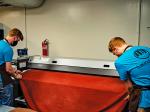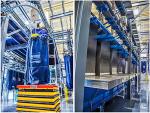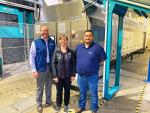CLAREMORE, Okla. — As the world starts to return to a more normal state following the impact of the pandemic over the past two years, many are finding it more difficult than ever to rebuild their teams.
Many companies found they could outsource office operations, have certain functions work from home (for likely a long time yet to come) and really scale back on people in the office environment.
Not so with plant operations teams! These jobs—sorting linen, hanging uniforms, filling orders, to name just a few—those jobs can’t be moved out, not now, not ever. But during the past two years, many plant employees were laid off, furloughed only to be laid off later and have moved on to other jobs.
The industry is finding itself in a feeding frenzy for talent across all types of jobs, and in competition with other industries as the labor pool has seemingly dried up.
Key areas and special efforts that will help during your rebuilding effort are outlined below.
Furloughed and laid off a few people, huh? This is the simplest of all solutions—call them back! Give ’em a ring and see if you can convince them to return. Don’t lose that trained talented workforce you had once upon a time. Consider bridging their time away to cover improved benefits as an incentive to return.
When you do bring new (or returning) people in make it a BIG DEAL! Plan ahead for their onboarding experience to be flawless! Remain in contact with them during the days leading up to their start. Send them welcome flowers, gift cards for a family meal out somewhere nice, and some company swag to get them back into the mood. Create pride in their workplace before they ever set foot in the building.
A flawless onboarding experience is key—have all their first-day materials ready—benefits packages, hiring paperwork, handbooks, uniforms, and work outfits, and plan a nice lunch for new employees on their first day.
Don’t forget to reward and recognize those employees who stuck it out with you through the pandemic. Many of these were already or became very well cross-trained in many jobs and tasks through that time.
Take advantage of that expertise that was developed and buddy them up with a new employee. Make trainers out of them and engage them in the process of bringing on a new employee successfully. And don’t hesitate to reward them for it.
Make sure your management team, not just the shift supervisors, rally around these new employees. Make them feel at home, keep them informed on company news and assure they know if they are doing the job to your satisfaction.
Shift supervisors are incredibly important but incredibly busy, so it can’t hurt for the GM, service manager or others to frequently walk the plant and build relationships with the plant employees.
During the pandemic, many operators turned to automation. This may be a shock to some returning employees, but with labor rates escalating among a decreasing labor pool, automation may be the only choice for some jobs.
Continue to assess what tasks can be automated and what that will do to help your operation, and don’t be afraid to bring in your plant employees to the conversation.
Above all, they know better than anyone what tasks are repetitive to the point that automation may be the best choice. Protect their employment—turnover will happen naturally soon enough—but continue to find ways to reduce the manual labor input to your product line.
The Bottom Line: We need our plant employees, and they need to be employed. Just make sure to cherish them from Day One (and sooner for new hires).
Have a question or comment? E-mail our editor Matt Poe at [email protected].




























































